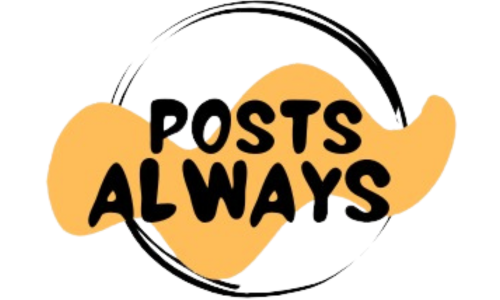Emerson Cutler Majestic Theatre, Boston, MA.
November 23, 2024.
Some name Martha Graham the “mom of recent dance.” Students and dance fans might (and do) moderately debate the declare. Maybe extra assuredly, she’s the mom of American fashionable dance — first presenting work in 1926, and from there inspiring numerous American dancemakers to create one thing of their very own. 2026 marks the corporate’s Centennial.
The dance firm, the oldest within the U.S., is within the midst of a three-year Centennial Celebration — full with touring, commissioning new works, increasing the corporate’s repertory, cross-disciplinary collaborations, public outreach initiatives and extra. I used to be blessed to expertise a part of this celebration in Boston – wherein, fairly fittingly, I noticed mirrored a sure sort of American spirit. Every work resonated with a barely totally different timber of that spirit, however filled with Americana every remained.
Graham’s Darkish Meadow Suite (1946) kicked off this system. Emblematic of Graham’s pathbreaking voice, it supplied each thriller and luxury. It started with dancers unfold out throughout the stage, the one rating their toes and breath. As they moved at molasses-speed, an environment constructed as enigmatic because the title. Their costumes of earth tones and motley line, form, and picture (by Graham) added to that enigma.
Graham signatures have been additionally evident proper off the bat — grounded weightedness, readability of form, expressiveness in spinal rise and fall. Her musical affinity was additionally clear, with the motion vocabulary – because it steadily gained velocity and depth – assembly numerous layers within the rating. That concord of motion and music, filled with clear accents and energy, supplied one thing predictable within the midst of ambient uncertainty. Soloist Anne Souder was a very positive anchor; she introduced beneficiant and delicate subtlety to every arch, contraction, and much past.
Additionally notable was the work’s partnering, a positive instance of Graham’s improvements constructing on – after which absolutely shaking up – the classical ballet custom. Dancers angled their our bodies ahead, straight as plywood, with the assist of companions. From that steady place, they swept arms throughout house earlier than them, alternating proper and left. Amidst the thriller and unease, there might be belief and care…maybe there wanted to be.
That had me starting to consider the American spirit inside this program. On one stage, sure, all of it felt like such quintessential Graham, her being (I’d argue) the founding pioneer of this nation’s fashionable dance custom. Past that, the experimental venture of American democracy might be filled with darkness and uncertainty – but, in one another, and with persistence, there may be additionally mild and tranquility.
Additionally hanging to me have been the virtually earthy and animalistic qualities at hand – feeling like one thing from a a lot totally different time in human historical past. In an age of ubiquitous smartphones and tablets, it’s no unhealthy factor to interface with these elemental components of us.
Agnes de Mille’s Rodeo (1942) got here subsequent, which Inventive Director Janet Eilber had famous would convey fairly a special tone than the previous piece. (She was fairly appropriate there.) Eilber additionally famous that the work was the primary main live performance work to include American vernacular motion types, many deriving from the nation’s immigrant and enslaved communities.
Instantly clear within the work have been the influences of these vernacular types, in addition to beautiful little moments constructing character and narrative. Motion and theatricality danced collectively, no seam in sight – from the work’s starting to its finish. The fluid assembly of the vernacular and concert-based types, which then so splendidly served the work’s theatricality, demonstrated how de Mille grew to become a real grasp of choreography for the display.
Sure, there have been turns, leaps and shapes that have to be completely exact to learn. But, that virtuosity appeared to reside inside the gestural and body-level nuance, that which stood as an unshakeable basis for the ever-evolving drama at hand. Pleasure might then burst from the stage, and I couldn’t assist however smile alongside; it was plain infectious. Significantly pleasant have been The Cowgirl (Laurel Dalley Smith), educating a masterclass in comedic timing, and her eventual love curiosity (Richard Villaverde), exuding a spot-on mix of bravado and heat.
All the little moments of drama constructed to a nighttime sq. dance, full with a backdrop virtually Starry Night time within the ethereality of its moon and stars (by Beowulf Boritt), and a daytime dance earlier than a barn. The “ugly duckling” cowgirl there discovered her footing, danced with aplomb, and ended up with not one however two suitors. She was the “everygirl” who stepped up, claimed what she needed, and got here out on prime due to it. That’s the quintessential American story in spite of everything, isn’t it?
Graham’s iconic Lamentation (1930) adopted, fairly memorably carried out by So Younger An. As Eilber had additionally shared, your complete solo takes place on and proper earlier than a bench – the soloist spotlit and the stage in any other case pitch-dark. The pathos escalated because the soloist’s actions grew to become extra taut and staccato.
Clean rib cage rolls and lateral torso shifts grew to become angular reaches, arms clasped with rigidity and arms spreading towards the tubular costume’s constriction. Younger An delivered all of that with full generosity and command. It was clear that she had absorbed the quick solo’s each nuance into her very being – in order that she might then provide every to us in flip.
At one level, she stood, and I virtually had hope that she would discover the company to step away from the bench. But, that was to not be. The taut qualities, the battling of the costume’s constriction, solely elevated – till she slumped ahead from the waist, folding over legs. Not all endings are completely happy, and a few don’t see the sunshine on the horizon that can come. Dr. Martin Luther King knew that he may not see the mountaintop, but he led us towards it nonetheless. That long-sighted wrestle for one thing higher is one other indispensable a part of the American story.
It might be my fashionable bias, however of all this system’s works Jamar Roberts’ We The Folks (February 2024) felt most explicitly illustrative of this nation — its tensions, its purported values, its imaginative and prescient of what it might be. The piece therein felt like an important nearer, offering each hope and meals for thought as we step ahead into the following American chapter.
Motion oscillated between the aqueous and one thing extra convulsive. Dancers rode the road between the refined and frenetic, coming again to the calm of management after the joys of virtually dropping it. They moved tenaciously, independently, then collectively danced one thing softer.
All of the whereas, supple receptivity made accented energy pleasantly steady — a kinetic intelligence at hand that melded all of those qualities and contrasts right into a harmonious entire. These dynamics intensified as a solo shifted into the total, busy stage of the entire ensemble transferring collectively – but additionally which Roberts keenly formed to stay digestible.
The rating (from Rhiannon Giddens) and costuming (by Karen Younger) have been a supportive container for all of these decisions, and likewise sharpened the poignancy at hand. Electronica-peppered bluegrass tones and denim felt modernized, but in addition grounded in one thing older – the Americana custom ringing by means of to our current day. America is stuffed with contrasts and contradictions: from sea to sea, previous and current, neighborhood to neighborhood. We discover one thing fluid and fruitful once we convey some sort of reconciliation to division.
Towards the work’s finish, a considerate, unrushed, unforced solo stuffed the stage. That shifted into one other tenacious group part, resonating with much more hope and vivacity. I might really feel the dancers’ pure pleasure vibrating off the stage, ecstasy from the straightforward expertise of transferring in neighborhood. That’s one thing to recollect as we transfer ahead right into a extra excellent union.
It could additionally merely be the transferring artwork that’s entrancing and invigorating to expertise – and that’s invaluable too. We want each. Thanks to Martha Graham Dance Firm for providing each, and congratulations on an indelible legacy. Our oldest dance firm is now woven into American material, telling its singular tales – and likewise remaining a shining creation of its personal.
By Kathryn Boland of Dance Informa.



